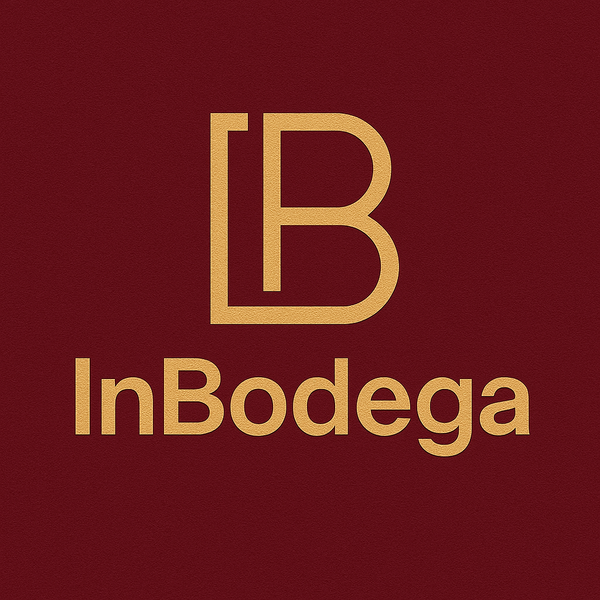
Is Wine Under Attack? How Cannabis, Ozempic, and Gen Z Are Rewriting the Rules of Drinking
Share
The Future of Drinking Is Being Rewritten—And Wine Is on the Defensive
The CEO of Brown-Forman—the company behind Jack Daniel’s—just dropped a bombshell: Americans are drinking less whiskey, and the reason has nothing to do with taste.
According to CEO Lawson Whiting, the three biggest forces behind the slump in alcohol sales are:
-
Cannabis legalization
-
GLP-1 weight-loss drugs like Ozempic and Wegovy
-
Gen Z’s radically different relationship with alcohol
It’s a tidy little list with massive implications. And while most of the headlines are focused on spirits, let’s be clear: wine is in the line of fire, too.
But unlike whiskey, which has a deep connection to ritual and masculinity, or tequila, which can ride the wave of celebrity culture, wine sits awkwardly in this cultural moment. It’s not “clean,” it’s not “functional,” and it’s not trying hard enough to defend itself.
So let’s break this down—because what’s happening isn’t just a dip in demand.
It’s a narrative war, and alcohol is losing.
🍃 1. Cannabis Isn’t Just Competing—It’s Rebranding Pleasure
Cannabis is no longer a rebellious subculture. It’s a wellness product, dressed in sleek packaging, sold in curated dispensaries that look like Apple Stores.
More importantly, it’s part of a larger campaign: to paint alcohol as outdated, toxic, and low-vibe.
From CBD mocktails to “canna-wine” startups to VC-backed influencers saying things like “I gave up alcohol and got my life back”, the message is clear:
Wine is your parents' poison. Weed is your modern solution.
This isn’t organic. It’s strategic.
The cannabis industry has everything to gain from alcohol’s decline—and the wellness industry, worth trillions, is happy to help reframe the conversation.
💉 2. GLP-1 Drugs Like Ozempic Are Killing the Buzz—Literally
If you’re on Ozempic, you don’t want a second glass of wine. Hell, you might not even want the first.
GLP-1 agonists (Ozempic, Wegovy, Mounjaro) work by suppressing appetite and cravings—including alcohol. And their adoption is exploding.
-
Nearly 1 in 60 Americans are on GLP-1 drugs.
-
Use is especially high among high-income consumers—i.e., the core wine-buying demographic.
-
Early data shows users reduce alcohol intake by up to 50%—without trying.
For the wine industry, this is an existential threat hiding in plain sight. It’s not a boycott. It’s biochemical.
👶 3. Gen Z Isn’t Drinking Less—They’re Drinking Differently
Yes, Gen Z drinks less overall. But it’s not because they’re boring. It’s because they’ve redefined what “drinking” even means.
They’re choosing:
-
Low-ABV spritzes over full-bodied reds
-
Canned cocktails over cellar-aged bottles
-
Cool packaging over appellations and Parker points
-
Experiences over rituals
And here's the kicker: half of Gen Z is still underage.
We’re making sweeping generalizations about a generation that hasn’t even fully entered the legal drinking market. But the cultural signals are already clear:
If wine doesn’t show up on their terms, it won’t show up at all.
🧠 This Isn’t a Health Crisis. It’s a Story Crisis.
Wine isn't being rejected for what it is.
It’s being ignored because it hasn’t kept up with the conversation.
For decades, the wine world has sold itself on tradition, scarcity, and “elevated taste.” That worked when status was the goal. But now? The modern consumer wants connection, functionality, and authenticity.
Meanwhile:
-
Cannabis tells a better story about calm.
-
Ozempic tells a better story about control.
-
Gen Z tells a better story about the future.
And wine? Still talking about minerality.
🍷 So What Can Wine Do?
At InBodega, we’re not here to panic. We’re here to fight back—with better stories, deeper connections, and smarter culture.
Here’s how wine wins:
1. Get Personal
Consumers want to know who made their wine, where it came from, and why it matters. Not with clichés—with real stories.
2. Design Like You Mean It
If your label looks like it was printed in 1997, Gen Z has already moved on. Good design isn’t optional anymore. It’s table stakes.
3. Speak the Culture
Wine has soul. But it has to speak the language of now. That means less jargon, more relevance. Less gatekeeping, more realness.
4. Own the Wellness Narrative
Wine is wellness—if we stop letting others define the terms.
-
Moderation.
-
Pleasure.
-
Ritual.
-
Connection.
It’s not about denial. It’s about intentional living—and wine belongs there.
Final Pour: Wine Isn’t Dead. But It Is in a Fight.
If you’re in the wine industry and you’re not paying attention to what’s coming—Ozempic, cannabis, Gen Z, and the billion-dollar narrative machine behind them—you’re not just behind.
You’re invisible.
But if we get bold, get smart, and get loud?
Wine doesn’t just survive. It wins.
We’re building that future at InBodega—one story, one bottle, one rebellion at a time.
Let’s stop playing defense.
It’s time wine went to war.
